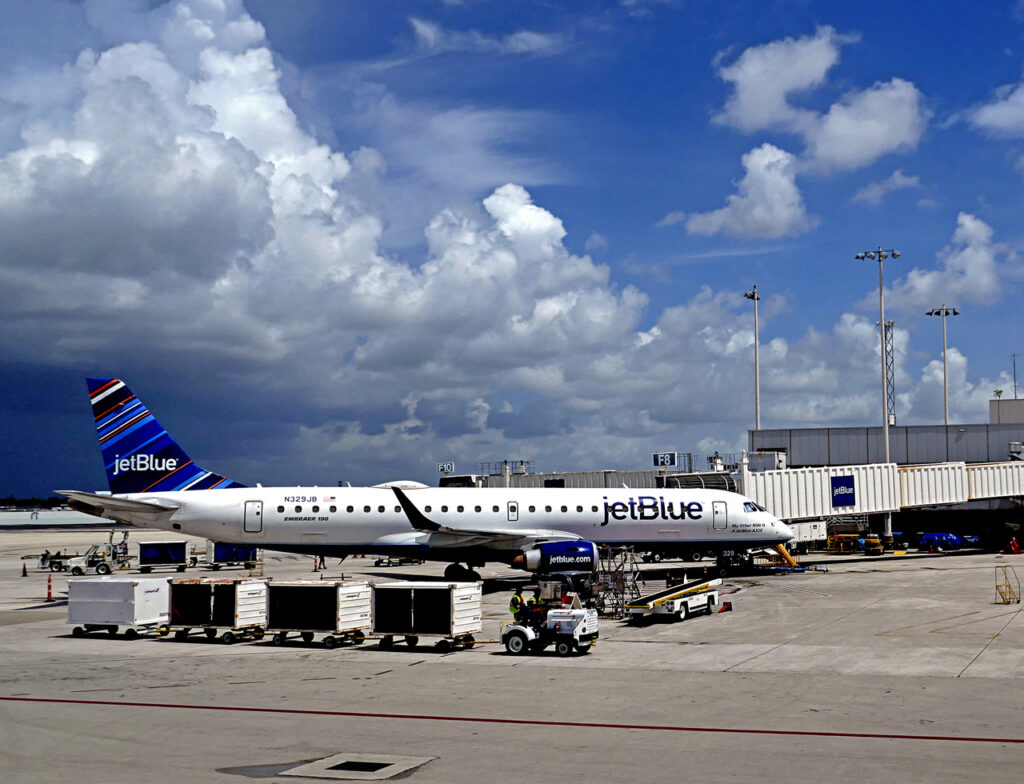American low-cost airline jetBlue has revealed that it is to join forces with one of the world’s largest fuel suppliers, Shell Aviation, in a bid to bring more Sustainable Aviation Fuel (SAF) to LAX Airport, Los Angeles.
The agreement states that LAX will receive ten million gallons of blended SAF over the course of the next two years, and includes an option for a further five million gallons in year three.
Noting how this deal is a step in the right direction to improving the carriers carbon footprint, Chief Executive Officer of jetBlue, Robin Hayes said:
“We’ve long said we need multiple key stakeholders to step up to reach our aggressive emissions reduction goals. This deal with Shell is a key signal of the growing engagement of the major fuel producers to begin converting conventional jet fuel to SAF.”
SAF reduces natural greenhouse gas emissions by up to 80% when compared to traditional fuel. It also has the added benefit of being a ‘drop in solution’ which means that the aircraft does not have to undergo any modifications to carry or utilise the fuel, whilst also not being detrimental to the jets.
Turning waste into fuel
Sustainable Aviation Fuel is manufactured from a range of renewable sources called feedstocks. Examples include: carbon captured from the air, used cooking oil, and forestry or agricultural wastes.
Using feedstocks allows carbon to be recycled, instead of being added into the atmosphere afresh. Hayes continued, detailing why Shell were the right company to join forces with:
“Shell’s involvement, with their expertise in energy markets and logistics, is a validation of the SAF market’s potential and highlights how critical the SAF transition of our hard-to-decarbonize industry is to establishing a more sustainable future of flight”
[monsterinsights_popular_posts_inline]
The announcement will form the first steps in jetBlues roadmap to be net carbon zero by 2040. A determined goal it seems, as the industry standard for airlines to be at net zero is 2050.
When rolled out, the increase in supply of SAF will boost jetBlue’s total LAX fuel uptake to around 15 percent.
“It’s terrific to be supporting JetBlue once again in its decarbonization efforts,” said Jan Toschka, President of Shell Aviation. “Like Shell, JetBlue understands that SAF will be the key technology to help decarbonize flight.”
Toschka: Delighted to support greener travel
“LAX is a critical North American airport hub and we’re delighted to be able to provide JetBlue and corporations on its Sustainable Travel Partners program access to SAF, allowing them to lower their emissions while jointly contributing to investments in SAF,” Toschka concluded.
These plans to make California a greener state coincide with arrangements jetBlue made in 2022, where they signed deals for the future supply of SAF out of San Francisco Airport, where jetBlue already operates blended-fuel flights.
“Working with Shell will not only help grow the availability of SAF in the long-term, but also ensure this transition is sustainable from a business perspective, by building the connections and infrastructure to help keep the cost of SAF competitive with traditional fuel” said, Sara Bogdan, director sustainability and ESG, JetBlue.
Sustainable Aviation Fuel is more expensive than standard jet fuel, so airlines will depend on government initiatives that encourages carriers to start using more lower carbon fuels as it becomes more readily available in the industry.









